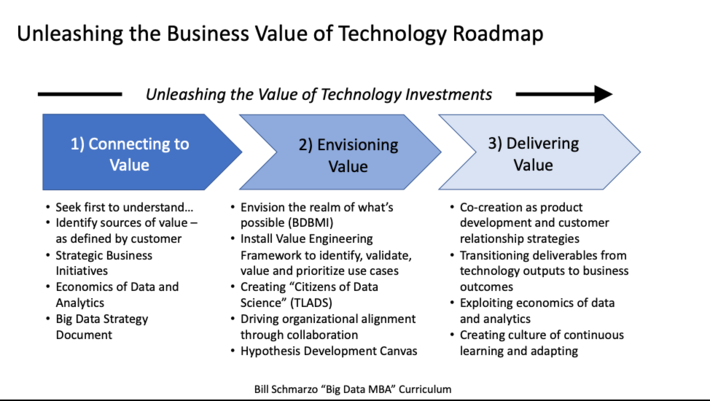
Figure 1: Unleashing the Value of Technology Roadmap
In part 1 of the blog series “Unleashing the Business Value of Technology Part 1: Framing the Cha…”, I introduced the 3 stages of “unleashing business value”: 1) Connecting to Value, 2) Envisioning Value and 3) Delivering Value (see Figure 1).
We discussed why technology vendors suck at unleashing the business value of their customers’ technology investments because they approach the challenge with the wrong intent. We then discussed some failed technology vendor engagement approaches; product-centric approaches that force the customer to “make the leap of faith” across the chasm of value.
We also introduced the Value Engineering Framework as a way to “reframe the customer discussion and engagement approach; a co-creation framework that puts customer value realization at the center of the customer engagement” (see Figure 2).
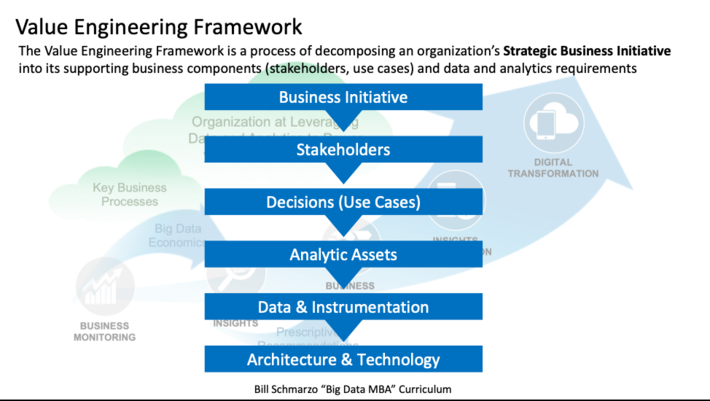
Figure 2: Value Engineering Framework
The Value Engineering Framework is successful not only because it starts the co-creation relationship around understanding and maximizing the sources of customer value creation, but the entire process puts your customer value creation at the center of the relationship.
In Part 2, we are going to provide some techniques that enable technology vendors to connect to “value”, but that is “value” as defined by the customer, not “value” as defined by product or services capabilities. The Value Engineering Framework helps transition the customer engagement discussion away from technology outputs towards meaningful and material customer business outcomes (see Figure 3).
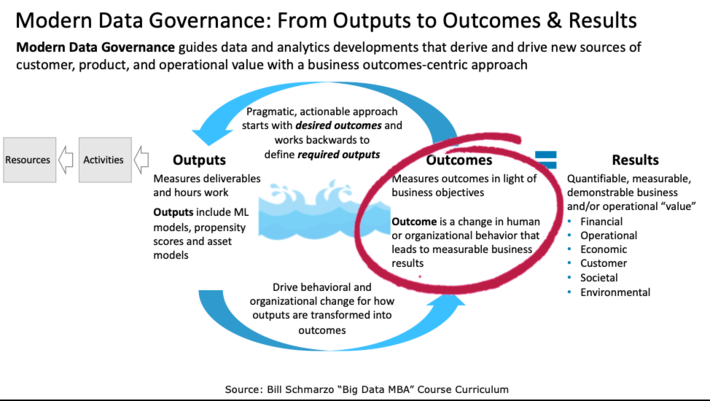
Figure 3: Modern Data Governance: From Technology Outputs to Business Outcomes
So, how do technology vendors “connect to value” in their conversations with customers’ business executives? They must invest the upfront time to understand where and how value is created by the customer. Here are a couple of tools and techniques that technology vendors can use to understand and connect with the customer’s sources of value creation.
Step 1: Understand How Your Customer Makes Money
I’m always surprised by how few technology vendors take the time to read their customers’ financial statements to learn what’s important to their customers. Financial reports, press releases, quarterly analyst calls, corporate blogs and analyst websites (like SeekingAlpha.com) are a rich source of information about an organization’s strategic business initiatives – those efforts by your customers to create new sources of business and operational value.
But before we dive into an annual report exercise, let’s establish some important definitions to ensure that we are talking about the same things:
- Charter or Mission is why an organization exists. For example, the mission for The Walt Disney Company is to be “one of the world’s leading producers and providers of entertainment.”
- Business Objectives describe what an organization expects to accomplish over the next 2 to 5 years. The Business Objectives for The Disney Company might include MagicBand introduction, launch “Black Widow” movie, and launch the new Disney World “Star Wars – Rise of the Resistance Trackless Dark Ride” attraction.
- Business Initiative is a cross-functional effort typically 9-12 months in duration, with well-defined business metrics, that supports the entity’s business objectives. For The Disney Company example, it might be to “leverage the MagicBand to increase guest satisfaction by 15%” or “leverage the MagicBand increase cross-selling of Class B attractions by 10%.”
- Decisions are defined as a conclusion or resolution reached after consideration or analysis that leads to action. Decisions address what to do, when to do it, who does it and where to do it. For The Disney Company example, “Offer FastPass+ to these guests for these attractions at this time of the day” is an example of a decision.
- Use Cases are a cluster of Decisions around a common subject area in support of the targeted business initiative. The Disney Company use cases supporting the “Increase Class B Attraction Attendance” Business Initiative could include:
- Increase Class A to Class B attraction cross-promotional effectiveness by X%
- Optimize Class B attraction utilization using FastPass+ by X%
- Increase targeted guest park experience using FastPass+ by X%
- Optimize FastPass+ promotional effectiveness by time-of-day by X%
Using these definitions, let’s examine the Starbucks’ 2019 Annual Report to identify their key business objectives (see Figure 4).
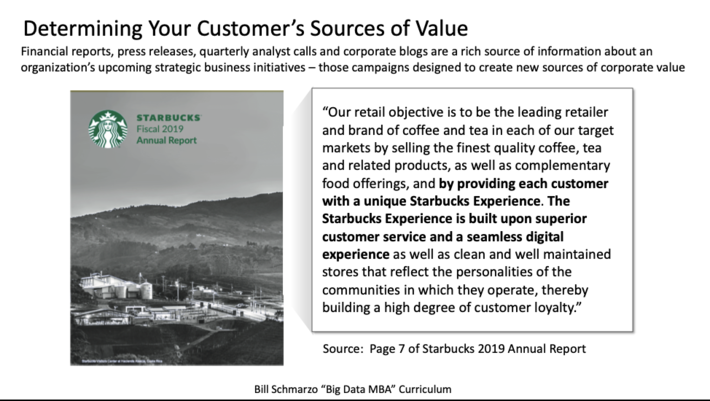
Figure 4: Reading the 2019 Starbucks Annual Report
From Figure 4, we can see that one of Starbucks business objectives is “Providing each customer a unique Starbucks experience.” (Note: the annual report is chockfull of great opportunities for technology vendors to co-create value with their customers). Let’s triage Starbuck’s “Unique Starbucks Experience” business objective to understand our technology product and service capabilities can enable their “Providing each customer a unique Starbucks experience”. Welcome to the “Big Data Strategy Document”.
Step 2: The Big Data Strategy Document
The Big Data Strategy Document decomposes an organization’s business objective into its potential business initiatives, desired business outcomes, critical success factors against which progress and success will be measured, and key tasks or actions. The Big Data Strategy Document provides a design template for contemplating and brainstorming the areas where the technology vendor can connect to the customer’s sources of value creation prior to ever talking to a customer’s business executives. This includes the following:
- Business Objective. The title of the document states the 2 to 3-year business strategy upon which big data is focused.
- Business Initiatives. This section states the 9 to 12-month business initiatives that supports the business strategy (sell more memberships, sell more products, acquire more new customers).
- Desired Outcomes. This section contains the Desired Business or Operational Outcomes with respect to what success looks like (retained more customers, improved operational uptime, reduced inventory costs).
- Critical Success Factors (CSF). Critical Success Factors list the key capabilities necessary to support the Desired Outcomes.
- Use Cases. This section provides the next level of detail regarding the specific use cases (“how to do it”) around which the different part of the organizations will need to collaborate to achieve the business initiatives.
- Data Sources. Finally, the document highlights the key data sources required to support this business strategy and they key business initiatives.
(Note: the Big Data Strategy Document is covered in Chapter 3 my first book “Big Data: Understanding How Data Powers Big Business.” The book provides worksheets to help organizations to determine where and how big data can derive and drive new sources of business and operational value. Still a damn relevant book!)
See the results of the Starbucks triage exercise in Figure 5.
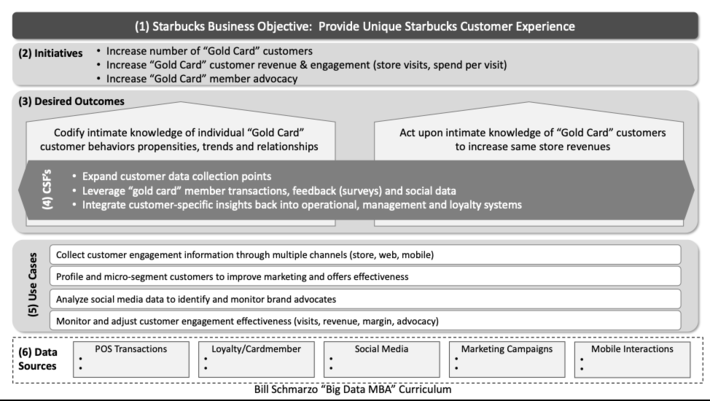
Figure 5: Starbucks Big Data Strategy Document
To learn more about leveraging the Big Data Strategy Document, check out this oldie but goodie blog “Most Excellent Big Data Strategy Document”.
Summary: “Connecting to Value”
The challenge most technology vendors face when trying to help their customers unleash the business value of their technology investments, is that vendors don’t intimately understand how their customers create value. Once the technology vendor understands how the customer creates value, then the technology vendor has a frame against which to position their product and service capabilities to co-create new sources of value for both the customer and the technology vendor.
